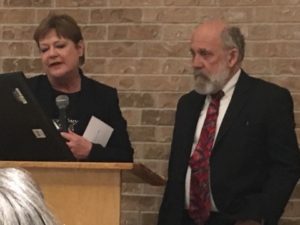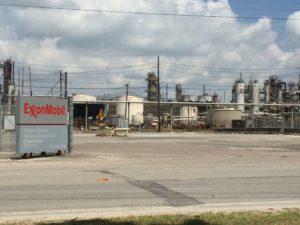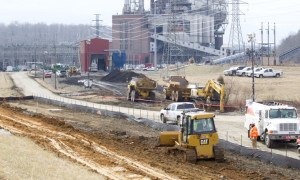A few months after the deadly explosion at a fertilizer plant in West, Texas, President Obama signed an executive order aimed at increasing safety and oversight at chemical plants across the country. We challenge the state of Texas to go further over the interim session to insure communities have the information they need for their Local Emergency Planning Commissions (LEPCs) to develop adequate plans for dealing with accidents at chemical facilities located within their jurisdiction.
EXECUTIVE ORDER
– – – – – – –
IMPROVING CHEMICAL FACILITY SAFETY AND SECURITY
By the authority vested in me as President by the Constitution and the laws of the United States of America, it is hereby ordered as follows:
Section 1. Purpose. Chemicals, and the facilities where they are manufactured, stored, distributed, and used, are essential to today’s economy. Past and recent tragedies have reminded us, however, that the handling and storage of chemicals are not without risk. The Federal Government has developed and implemented numerous programs aimed at reducing the safety risks and security risks associated with hazardous chemicals. However, additional measures can be taken by executive departments and agencies (agencies) with regulatory authority to further improve chemical facility safety and security in coordination with owners and operators.
Sec. 2. Establishment of the Chemical Facility Safety and Security Working Group. (a) There is established a Chemical Facility Safety and Security Working Group (Working Group) co-chaired by the Secretary of Homeland Security, the Administrator of the Environmental Protection Agency (EPA), and the Secretary of Labor or their designated representatives at the Assistant Secretary level or higher. In addition, the Working Group shall consist of the head of each of the following agencies or their designated representatives at the Assistant Secretary level or higher:
(i) the Department of Justice;
(ii) the Department of Agriculture; and
(iii) the Department of Transportation.
(b) In carrying out its responsibilities under this order, the Working Group shall consult with representatives from:
(i) the Council on Environmental Quality;
(ii) the National Security Staff;
(iii) the Domestic Policy Council;
(iv) the Office of Science and Technology Policy;
(v) the Office of Management and Budget (OMB);
(vi) the White House Office of Cabinet Affairs; and
(vii) such other agencies and offices as the President may designate.
(c) The Working Group shall meet no less than quarterly to discuss the status of efforts to implement this order. The Working Group is encouraged to invite other affected agencies, such as the Nuclear Regulatory Commission, to attend these meetings as appropriate. Additionally, the Working Group shall provide, within 270 days of the date of this order, a status report to the President through the Chair of the Council on Environmental Quality and the Assistant to the President for Homeland Security and Counterterrorism.
Sec. 3. Improving Operational Coordination with State, Local, and Tribal Partners. (a) Within 135 days of the date of this order, the Working Group shall develop a plan to support and further enable efforts by State regulators, State, local, and tribal emergency responders, chemical facility owners and operators, and local and tribal communities to work together to improve chemical facility safety and security. In developing this plan, the Working Group shall:
(i) identify ways to improve coordination among the Federal Government, first responders, and State, local, and tribal entities;
(ii) take into account the capabilities, limitations, and needs of the first responder community;
(iii) identify ways to ensure that State homeland security advisors, State Emergency Response Commissions (SERCs), Tribal Emergency Response Commissions (TERCs), Local Emergency Planning Committees (LEPCs), Tribal Emergency Planning Committees (TEPCs), State regulators, and first responders have ready access to key information in a useable format, including by thoroughly reviewing categories of chemicals for which information is provided to first responders and the manner in which it is made available, so as to prevent, prepare for, and respond to chemical incidents;
(iv) identify areas, in collaboration with State, local, and tribal governments and private sector partners, where joint collaborative programs can be developed or enhanced, including by better integrating existing authorities, jurisdictional responsibilities, and regulatory programs in order to achieve a more comprehensive engagement on chemical risk management;
(v) identify opportunities and mechanisms to improve response procedures and to enhance information sharing and collaborative planning between chemical facility owners and operators, TEPCs, LEPCs, and first responders;
(vi) working with the National Response Team (NRT) and Regional Response Teams (RRTs), identify means for Federal technical assistance to support developing, implementing, exercising, and revising State, local, and tribal emergency contingency plans, including improved training; and
(vii) examine opportunities to improve public access to information about chemical facility risks consistent with national security needs and appropriate protection of confidential business information.
(b) Within 90 days of the date of this order, the Attorney General, through the head of the Bureau of Alcohol, Tobacco, Firearms and Explosives (ATF), shall assess the feasibility of sharing data related to the storage of explosive materials with SERCs, TEPCs, and LEPCs.
(c) Within 90 days of the date of this order, the Secretary of Homeland Security shall assess the feasibility of sharing Chemical Facility Anti-Terrorism Standards (CFATS) data with SERCs, TEPCs, and LEPCs on a categorical basis.
Sec. 4. Enhanced Federal Coordination. In order to enhance Federal coordination regarding chemical facility safety and security:
(a) Within 45 days of the date of this order, the Working Group shall deploy a pilot program, involving the EPA, Department of Labor, Department of Homeland Security, and any other appropriate agency, to validate best practices and to test innovative methods for Federal interagency collaboration regarding chemical facility safety and security. The pilot program shall operate in at least one region and shall integrate regional Federal, State, local, and tribal assets, where appropriate. The pilot program shall include innovative and effective methods of collecting, storing, and using facility information, stakeholder outreach, inspection planning, and, as appropriate, joint inspection efforts. The Working Group shall take into account the results of the pilot program in developing integrated standard operating procedures pursuant to subsection (b) of this section.
(b) Within 270 days of the date of this order, the Working Group shall create comprehensive and integrated standard operating procedures for a unified Federal approach for identifying and responding to risks in chemical facilities (including during pre-inspection, inspection execution, post-inspection, and post-accident investigation activities), incident reporting and response procedures, enforcement, and collection, storage, and use of facility information. This effort shall reflect best practices and shall include agency-to-agency referrals and joint inspection procedures where possible and appropriate, as well as consultation with the Federal Emergency Management Agency on post-accident response activities.
(c) Within 90 days of the date of this order, the Working Group shall consult with the Chemical Safety Board (CSB) and determine what, if any, changes are required to existing memorandums of understanding (MOUs) and processes between EPA and CSB, ATF and CSB, and the Occupational Safety and Health Administration and CSB for timely and full disclosure of information. To the extent appropriate, the Working Group may develop a single model MOU with CSB in lieu of existing agreements.
Sec. 5. Enhanced Information Collection and Sharing. In order to enhance information collection by and sharing across agencies to support more informed decisionmaking, streamline reporting requirements, and reduce duplicative efforts:
(a) Within 90 days of the date of this order, the Working Group shall develop an analysis, including recommendations, on the potential to improve information collection by and sharing between agencies to help identify chemical facilities which may not have provided all required information or may be non-compliant with Federal requirements to ensure chemical facility safety. This analysis should consider ongoing data-sharing efforts, other federally collected information, and chemical facility reporting among agencies (including information shared with State, local, and tribal governments).
(b) Within 180 days of the date of this order, the Working Group shall produce a proposal for a coordinated, flexible data-sharing process which can be utilized to track data submitted to agencies for federally regulated chemical facilities, including locations, chemicals, regulated entities, previous infractions, and other relevant information. The proposal shall allow for the sharing of information with and by State, local, and tribal entities where possible, consistent with section 3 of this order, and shall address computer-based and non-computer-based means for improving the process in the short-term, if they exist.
(c) Within 180 days of the date of this order, the Working Group shall identify and recommend possible changes to streamline and otherwise improve data collection to meet the needs of the public and Federal, State, local, and tribal agencies (including those charged with protecting workers and the public), consistent with the Paperwork Reduction Act and other relevant authorities, including opportunities to lessen the reporting burden on regulated industries. To the extent feasible, efforts shall minimize the duplicative collection of information while ensuring that pertinent information is shared with all key entities.
Sec. 6. Policy, Regulation, and Standards Modernization. (a) In order to enhance safety and security in chemical facilities by modernizing key policies, regulations, and standards, the Working Group shall:
(i) within 90 days of the date of this order, develop options for improved chemical facility safety and security that identifies improvements to existing risk management practices through agency programs,
(ii) within 90 days of developing the options described in subsection (a)(i) of this section, engage key stakeholders to discuss the options and other means to improve chemical risk management that may be available; and
(iii) within 90 days of completing the outreach and consultation effort described in subsection (a)(ii) of this section, develop a plan for implementing practical and effective improvements to chemical risk management identified pursuant to subsections (a)(i) and (ii) of this section.
(b) Within 90 days of the date of this order, the Secretary of Homeland Security, the Secretary of Labor, and the Secretary of Agriculture shall develop a list of potential regulatory and legislative proposals to improve the safe and secure storage, handling, and sale of ammonium nitrate and identify ways in which ammonium nitrate safety and security can be enhanced under existing authorities.
(c) Within 90 days of the date of this order, the Administrator of EPA and the Secretary of Labor shall review the chemical hazards covered by the Risk Management Program (RMP) and the Process Safety Management Standard (PSM) and determine if the RMP or PSM can and should be expanded to address additional regulated substances and types of hazards. In addition, the EPA and the Department of Labor shall develop a plan, including a timeline and resource requirements, to expand, implement, and enforce the RMP and PSM in a manner that addresses the additional regulated substances and types of hazards.
(d) Within 90 days of the date of this order, the Secretary of Homeland Security shall identify a list of chemicals, including poisons and reactive substances, that should be considered for addition to the CFATS Chemicals of Interest list.
(e) Within 90 days of the date of this order, the Secretary of Labor shall:
(i) identify any changes that need to be made in the retail and commercial grade exemptions in the PSM Standard; and
(ii) issue a Request for Information designed to identify issues related to modernization of the PSM Standard and related standards necessary to meet the goal of preventing major chemical accidents.
Sec. 7. Identification of Best Practices. The Working Group shall convene stakeholders, including chemical producers, chemical storage companies, agricultural supply companies, State and local regulators, chemical critical infrastructure owners and operators, first responders, labor organizations representing affected workers, environmental and community groups, and consensus standards organizations, in order to identify and share successes to date and best practices to reduce safety risks and security risks in the production and storage of potentially harmful chemicals, including through the use of safer alternatives, adoption of best practices, and potential public-private partnerships.
Sec. 8. General Provisions. (a) This order shall be implemented consistent with applicable law, including international trade obligations, and subject to the availability of appropriations.
(b) Nothing in this order shall be construed to impair or otherwise affect:
(i) the authority granted by law to a department, agency, or the head thereof; or
(ii) the functions of the Director of OMB relating to budgetary, administrative, or legislative proposals.
(c) This order is not intended to, and does not, create any right or benefit, substantive or procedural, enforceable at law or in equity by any party against the United States, its departments, agencies, or entities, its officers, employees, or agents, or any other person.
BARACK OBAMA
THE WHITE HOUSE,
August 1, 2013.















